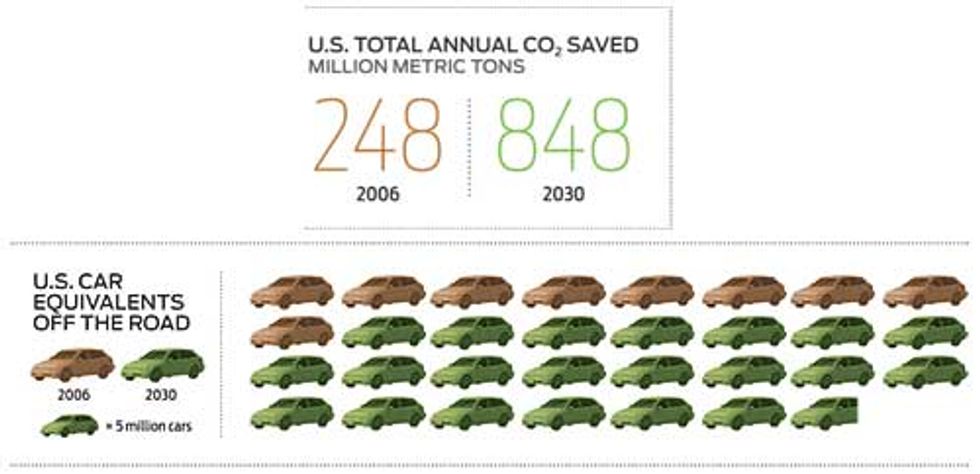Coal and natural-gas power plants lose as waste heat two-thirds of the energy they produce. Combined-heat-and-power (CHP) systems—what used to be called cogeneration—attain 80 percent efficiency by capturing the heat and using it locally. CHP predates electrical grids in many parts of the world.
Click on the image to see full-size graphic.
Tiny Denmark is the world leader, getting more than half its power from CHP. The germ of the plan dates to the early 20th century, when the country installed insulated pipes to shunt heat from big CHP plants to particular city districts to heat homes and water. After the oil crises of the 1970s, the Danes again instituted pro-CHP policies, boosting smaller-scale CHP plants in towns, industries, and individual buildings. Similar measures were taken in other EU countries.
The United States, the boss hog of energy-consuming nations, cogenerates a mere 9 percent of its power, putting it in 13th place internationally. Even so, because of its sheer size, it still has the world’s highest installed CHP capacity, at 85 gigawatts. That’s enough to save more than 2005 petajoules of fuel and carbon-dioxide emissions equivalent to those of 45 million cars. Oak Ridge National Laboratory recently reported that with the right blend of technology and policy advances, CHP could provide 20 percent of U.S. electricity.
